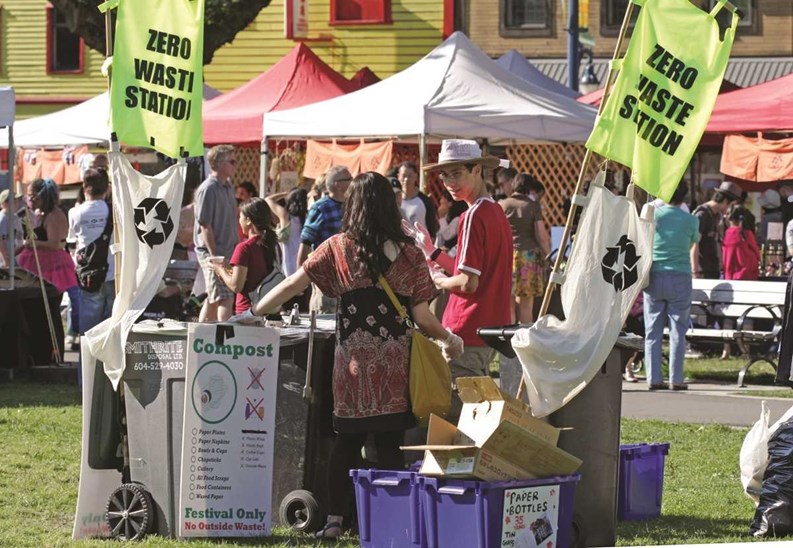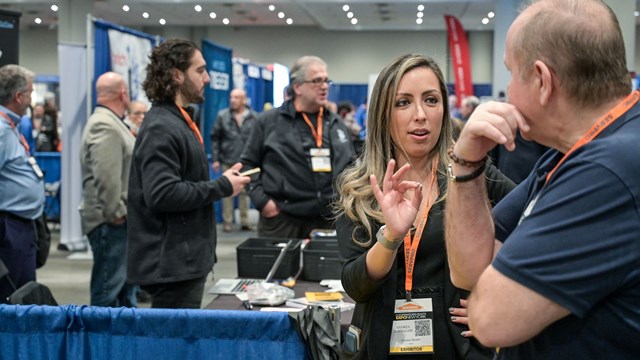These days, as the summers get hotter, the storms get bigger, and climate change is finding its way into more headlines than ever before, more attention is being paid to the environment and how the average citizen can do his or her part to support it. As a result, boards and managers are finding themselves introducing new rules, regulations, and technologies into co-ops, condos and HOAs to improve comfort for residents and work in tandem with statewide efforts to be better stewards of our resources and climate.
Encouraging Change
Concern for the environment and energy usage continues to grow, but so do energy prices. David Cohen, LCAM, vice president at AKAM On-Site in Dania Beach, says his board recently discussed, and eventually approved, the installation of newly developed and designed control valves. These valves will, he attests, assist in significantly reducing the electric and energy costs of operating the building’s cooling towers, and its associated pumps on the building’s roof. “A demand-based energy conservation project,” Cohen says, “will allow the cooling tower and its associated pumps to slow down when there is a reduced demand for air-conditioning, thereby saving energy and energy costs.”
Most ventilation and air conditioning systems require a building’s cooling towers and their associated pumps to operate at full capacity, regardless of demand. “In addition to conserving energy and saving money,” Cohen says, “this project will also expand the life of the equipment.”
Many property managers have encountered, among their board members, financial complaints regarding the introduction of eco-friendly solutions and innovations: “The consensus seems to be that the benefits are, at best, down the road,” says Steven J Weil, PhD, EA, LCAM, president at Royale Management Services, in Fort Lauderdale. “Replacing old lightbulbs a few at a time with compact fluorescent bulbs is as close as I’ve gotten, but the board members even complained about their slightly higher price.”
People Want to Know
“We regularly have board members reach out to their management team about greening their property,” says Doug Weinstein, executive director of operations and vice president of the Project Management Group (PMG) and AKAM Associates, based in New York. “And PMG consistently receives inquiries for more information on how to be energy efficient and a more sustainable property. As greening becomes a more widespread practice, the inquiries continue to rise. You also have many new buildings being constructed with sustainability and greening practices in mind from their inception.”
Cecil Scheib, PE, CEM, LEED AP, GPRO, chief program officer of the Urban Green Council in New York, has seen first-hand the results of buildings focusing on energy conservation and green policies. “It happened in my building,” he says, citing a conversion to LED lighting. “We’re seeing a trend,” he says, especially involving management companies making suggestions and providing guidance on renovations and upgrades.
Encouraging Change
Making major changes in energy consumption or green lifestyles take the support and engagement of all residents to be successful.
“In my experience, the important thing is showing people the value of what they can do by going green,” says Scheib. “Each person is motivated by different things. One may say they want to see a spreadsheet of savings, while another may want to hear about [how greening may mean] less maintenance.”
One approach with almost universal appeal is sharing how changes will affect the everyday lives of people in the building. If, for example, a board is going to replace the HVAC chiller unit, Scheib says he would focus on informing the residents that this will lead to more efficiency, and how the upgrade will pay for itself in energy savings.
George Crawford, principal of Green Partners LLC in New York City, encourages boards to educate residents on the economic benefits of energy conservation. “Any resident, if you tell them ‘I’m going to save you some money,’ they’ll be happy,” he says. “It is possible to go green and save money—and that’s the most practical way to approach it.”
Weinstein agrees, adding that “the best way to discuss greening with your residents is to educate them. An educated person is more likely to agree and understand what your building may be trying to achieve with greening techniques. Once residents understand the improvement greening can make, they are more receptive to the idea.”
A Team Effort
Working in tandem with management can assist in the transition. “We work with our boards to make it as easy as possible for residents to practice green techniques,” says Weinstein. “Whether that means setting up collection sites that are easily accessible, or training building staff on how to properly handle new greening techniques, we realize the best way to get residents involved is by making it so easy that it becomes second nature to them.”
Green committees also can be helpful in convincing their neighbors and fellow residents of the benefits of a program or technology. For example, “Low-flow toilets can have a fantastic payback that can be measured in months,” says Scheib. They can be a difficult sell, though. “If you have a committee and the committee members can say, ‘We tested five different toilets and everyone agrees this is the best,’ there’s much more trust.” People will listen if they feel that a friend or someone else who is just as invested as they are in the success of the building community has given the proposed change his or her stamp of approval.
Weinstein agrees. “Green committees definitely help,” he says. “When residents are involved firsthand, then techniques have a tendency to catch on quicker and have larger participation rates. Residents love to say, ‘I helped my building go green.’ They want to know they were personally responsible for reducing their building’s and their own carbon footprint.”
Making Good Choices
A number of different technologies and initiatives are taking center stage these days. Many of these “revolve around energy consumption—either electric or fuel for heating,” says Crawford.
In addition, “The current biggest greening initiative we see is the switch to LED and bi-level lighting,” says Weinstein. “Gas conversions, which are considered a greening technique due to the reduction of the building’s carbon footprint, are a close second. The initial investment for some of these can be high, but the long-term benefits outweigh that initial expense.”
For heating and cooling, using natural elements like the sun can help alleviate the all-too-common occurrence of residents in one section of a building getting too much heat and having to open windows during cooler days while residents in other areas are trying to warm up. Helping residents understand ahead of time how green approaches can make life better and more comfortable is of paramount importance in getting a buy-in from the whole building community. Older residents, though, may still be resistant to change and less certain about the long term benefits of becoming more green.
Expert Advice
When it comes time to make a decision about what kind of upgrades or changes will be most impactful for your building and residents, it can help to meet with a consultant who knows what's available, and what's practical for your particular community. “It is important to discuss your ideas with a professional management company that understands and implements greening initiatives,” Weinstein says. “A professional agency will know what will work and what will not. For instance, not every building can successfully employ solar panels, due to the Earth’s axis orientation or the availability of roof space. A competent management firm will be able to identify which techniques will benefit your building and guarantee a return on your investment in the long run.”
Planning for Change
Planning for green modifications well ahead of time gives residents time to better understand the changes and become invested in the projected results. It also can save money. “You have to plan ahead,” says Scheib. “Doing an engineering plan for a rooftop solar installation might take a while. But you could include it in a feasibility study and plan for it.”
That also allows for projects to be piggybacked on one another. “For infrastructure, for example, the time to do rooftop solar is when the roof needs replacing,” says Scheib. “It’s much easier to add the expense for an energy project into an existing project than doing it separately and off-cycle.”
With proper planning, the assistance of experts as well as the investment of time, energy and enthusiasm from green committees and other resident leaders, the transition to greener living can be a very positive and pain-free one. So many resources exist nationwide to assist residential buildings in making these transitions and more and more management firms each day are investing resources in helping their clients go green.
Concern for the environment is a trend that appears to be growing, not slackening, and one that will no doubt pay off for residents with cleaner, more efficient and more comfortable homes. It also may strengthen the bottom lines for co-ops and condos, helping significantly reduce energy costs. Perhaps most importantly, the more buildings that make these transitions, the greater the impact on the environment and the better off we all will be in the decades to come.
Liz Lent is a freelance writer and a frequent contributor to The South Florida Cooperator. Associate editor Tom Lisi contributed to this article.





Leave a Comment